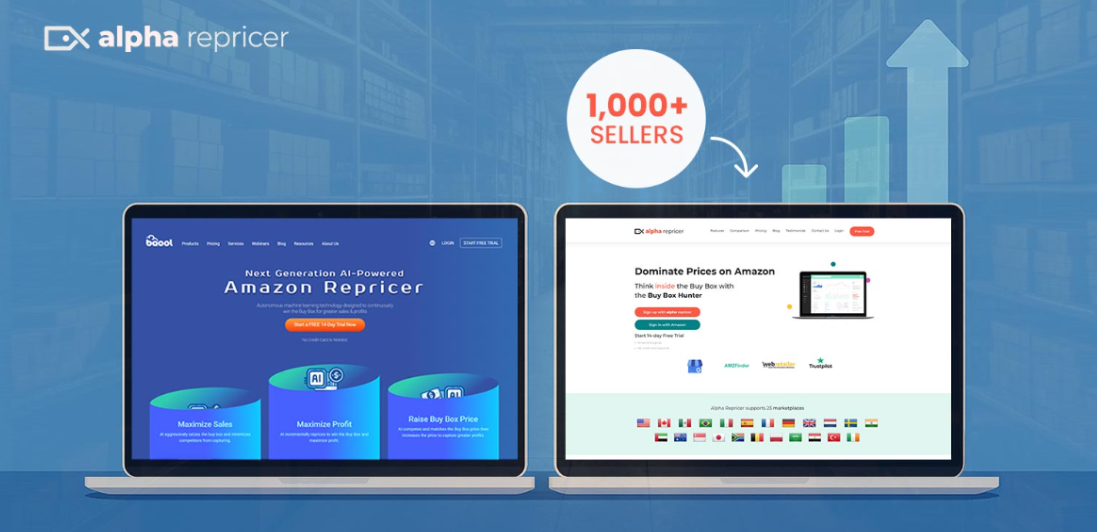Amazon makes its customers happy by providing the best customer experience! It allows them to shop from an extensive range of goods with amazing deals and discounts. To protect its buyers from fraud, Amazon has stringent rules about intellectual property. So it follows that third party sellers on Amazon should take the intellectual property policy very seriously. The consequences of breaking the IP policy can be dire.
Even the first notice can be a hard one to get around. And repeated infractions can get you suspended…forever. So, to understand Amazon’s Intellectual Property Policy, we have combined all the information related to IP rights and answered some of your questions. The definition of each term pretty much tells you what to watch out for. Then we have listed the actions to take in case Amazon gives you a warning.
Copyrights
Copyright is the ownership of original, creative work. It secures any author’s original work, for example, music, songs, video games, films, anything related to technology, etc. Copyright laws make sure that nobody else can copy your work or post it without your permission. It motivates authors to do more original work.
Any person who is the author of an original work possesses the copyright for that work. If you sell on Amazon, you must’ve taken photos of your product to upload on the product detail page. If you want to upload an image owned by some other seller, you must first ask for their permission. Amazon sometimes allows you to sell an author’s copyrighted work if you have consent from the copyright owner.
The exhaustion principle usually saves you from getting into trouble by allowing you to resell a legitimately purchased item (physical) without the copyright owner’s permission. However, if you want to resell an item in Europe, then make sure it was previously sold by an authorized distributor or by its owner.
It is essential to own what you work hard for or ensure that any product you sell does not violate copyright rules, or else you might face some legal consequences. Save yourself from losing your selling advantages.
Trademarks
Trademarks help you stand out from the other brands. It can be a design, symbol, or even a word that distinguishes you from other companies. On Amazon, it usually refers to your logo or brand name that differentiates your goods and services from other businesses’. It specifies the source of products so that the buyers do not get confused about the origin of items they are purchasing. To protect your trademark, you have to contact your country’s trademark office and register it. Laws secure any seller’s trademark from misuse by any third party.
Do you always need permission to use a trademark?
No. Even when you don’t own the trademark, that doesn’t restrict you from selling the owner’s product. If the item is authentic, you can use the trademark to promote or market that particular product. If you are selling a Beats headset and market it as a Beats headset, you aren’t harming the company’s name. Make sure you don’t violate the rights and if you are unsure, then take advice from your lawyer before you upload a listing on your Amazon account. To avoid such mishaps, ensure that a reputable supplier distributes the product that you are selling. If you are truthfully using the trademark to describe a product’s authenticity it may be fine. But if you are using it to show similarity it is an infringement.
Make sure that the products you market and the content you use for listings do not violate the trademark laws, or you may face legal consequences.
Patent
A patent is a form of the legal right of the owner to an invention. It legally allows owners to stop anybody else from making, selling, using, or importing an invention originated by them. A patent does not protect any creative work but only works for inventions such as a different type of camera invented or the phone launched.
Take help from any manufacturer or distributor of authorized products to make you understand patents and issues related to it in a better way.
Utility Model
It is also protection that works with inventions but not for the major ones. The utility model protects the rights of minor inventions. However, this type of ownership is not in many EU member states. It is very much like a patent, but the requirements necessary to apply the model are less strict. You can register quickly without needing to go through a lot of documentation.
Designs
The design also comes under Intellectual property policy. It protects the appearance of any product or a part of it. Any handicraft item or an industrial product, including the graphic design, packaging, typefaces, can be protected. Elements of any product that resembles your design can also come under the right. It includes all the characteristics of the item’s colors, lines, surface, form, structure, or materials.
To protect your design you should register it in your country’s office. However, if you work under European law, your designs are somehow protected even when they aren’t registered. However, it’s better to register your designs for long term durability.
Parallel Imports
Owners with Intellectual Property policy can stop you from importing or trading their products in the EEA (European Economic Area) if you have sourced them outside the European Economic Area. Before sourcing outside the EEA, make sure you take assistance legally to be certain that the product owner does not mind you doing this kind of import. Even if you do parallel import after taking permission from the owner, it could still affect your image. How? Well, suppose the products included in the non-EEA category differ from the EEA category products (in terms of variations, packaging, coverage, etc.). In that case, the customers might leave negative feedback.
Make sure that the products you sell on Amazon are imported rightfully after the permission of the owner. Even when you source the item, assure that you do it from the supplier who is permitted by the owner. Make sure you have proper documentation such as receipts in case you have to prove your right to sell an item.
What should be the next step to take if you receive a warning?
- If you have received a warning of violating rights, first determine if you have listed that product on Amazon. If not, then send an email back to Amazon to configure and solve the issue. Although, if sellers have talked through with the owners, then request them to take back their complaint. If Amazon gets to know about the consent of the owner, the complaint would be dismissed. If you think that the owner made a mistake, then provide the relevant invoice or anything that shows the item’s legitimacy.
- However, If you get more than one warning and you are sure that you sell genuine products, then file an appeal and attach an invoice, Order IDs, or authorization letter issued by the owner. These documents can help you prove the authenticity of each product.
- If owners file a complaint against you regarding the violation of Intellectual property policy, then you are in trouble. Make sure you send Amazon the detailed information as to why you were selling such products without permission. Besides, mention the steps you plan to follow to avoid violation. Amazon will then verify and decide if your account can be reactivated.
- Even when you didn’t know if you are involved in infringement, your account will still be suspended or warned. You should gather enough knowledge before you sell on Amazon about the Intellectual Property policy. Consult a lawyer if necessary.
Selling on Amazon can be very lucrative but comes with its challenges. You have to carry your business with authenticity and truthfulness to avoid such issues. If you keep up with the Intellectual Property rights, then you are good to go!
Be sure to check back for more informative blogs and check out Alpha Repricer’s world-class repricing. We take care of your repricing so you can take care of other business matters, like staying on top of Amazon policies. Register today for 14 days of free repricing.
Author
-
Noor Jarri
Meet Noor Jarri, a seasoned writer specializing in the dynamic world of Amazon. With over three years of experience, Noor has become a trusted resource for Amazon sellers seeking guidance on repricing strategies and navigating the e-commerce landscape. As a valued contributor to Alpha Repricer, Noor's expertise shines through in her engaging blog articles, press releases, and guest posts. Praised for her skill in crafting content that is both informative and approachable, Noor's writing is a knowledgeable resource for sellers of all levels. Beyond her professional pursuits, Noor is an avid traveler and culinary enthusiast. She finds inspiration in exploring new destinations and experimenting with recipes from around the world. Join Noor Jarri on her journey as she continues to empower Amazon sellers with insights, tips, and strategies to thrive in the ever-evolving marketplace.







